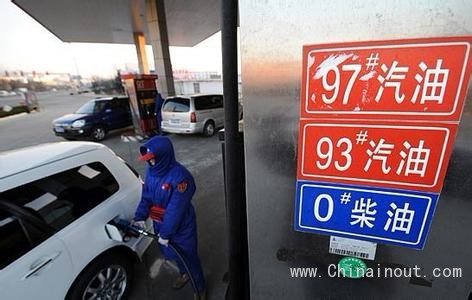顯示表觀石油需求強勁增長的中國數(shù)據(jù),,昨日驅(qū)散全球經(jīng)濟增長放緩和供應(yīng)過剩的陰影,支撐了布倫特(Brent)原油價格,。
9月表觀需求(考慮估測的成品油凈進口量和煉油廠原油加工量)同比高出7.1%,達到1030萬桶/日。這是自2013年6月以來最快的增長速度,。
優(yōu)于預(yù)期的數(shù)據(jù)令人看好煉油廠,、工廠和車主的需求。
國際油價基準——倫敦洲際交易所(ICE) 12月交貨的布倫特原油價格午后上漲54美分,,至每桶85.81美元,。交易商們正盼望著全球最大能源消費國的需求出現(xiàn)起色,從而支撐油價,。自6月中旬達到大約每桶115美元的高點以來,,油價已下跌25%。
“關(guān)鍵問題是,,中國能不能在今年余下時間乃至明年保持這種需求增長勢頭,?也就是說,它有沒有這個胃口,?”法國外貿(mào)銀行(Natixis)石油分析師阿布舍克•德什潘德(Abhishek Deshpande)表示,。
“如果(中國的)石油需求按照當前速度繼續(xù)增長,他們就能消化掉市場上的過剩供應(yīng),。”
當前的大背景是,,北美石油產(chǎn)量大幅增長,而受到戰(zhàn)亂困擾的利比亞和伊拉克維持了產(chǎn)出,。與此同時,,歐洲和亞洲經(jīng)濟增長乏力,導(dǎo)致需求放緩,。這些因素加起來,,形成石油過剩的局面。
分析師們正密切關(guān)注中國石油企業(yè)的庫存補充和中國戰(zhàn)略石油儲備的入庫,,以判斷強勁需求在多大程度上是可持續(xù)的,。
“價格已經(jīng)跌得如此之低,以至于中石油(PetroChina)的交易分支中聯(lián)油(Chinaoil)上周覺得價位已足夠低,,于是開始從中東買入原油,,”能源交易經(jīng)紀商PVM的戴維•霍夫頓(David Hufton)表示。
但倫敦咨詢公司Energy Aspects的阿姆里塔•森(Amrita Sen)表示,,這種機會主義的購買在未來可能減弱力度,。“最后一個季度的前景仍然更具挑戰(zhàn)性。”
鑒于21個亞太經(jīng)濟體的財長將齊聚北京開會,,她補充說:“北京將希望不惜代價迎來藍天,。目前華北的霧霾再度達到危險水平,促使北京和環(huán)繞該市的河北省的官員們削減工業(yè)生產(chǎn),,暫停建設(shè)施工,。政府還安排了11月初的六天公眾假期,以緩解北京的擁堵,。這將不可避免地影響到經(jīng)濟活動和石油需求”,。
雖然工業(yè)產(chǎn)出數(shù)據(jù)顯示出重大起色,,但另有數(shù)據(jù)顯示,第三季度中國經(jīng)濟增長放緩至2008-09年金融危機以來的最疲弱水平,。
國際貨幣基金組織(IMF),、國際能源機構(gòu)(IEA)和歐佩克(Opec)近期先后表示,對全球經(jīng)濟疲弱和需求降低感到擔心,,這打壓了油價,。一些能源市場觀察人士曾預(yù)計,歐佩克在其最大產(chǎn)油國沙特阿拉伯的帶頭下,,將減產(chǎn)維持較高價格,。但這個卡特爾迄今并未實行這樣的政策。(中國進出口網(wǎng))
Chinese data showing robust growth in implied oil demand supported the price of Brent crude yesterday, despite the spectre of slowing global growth and excess supplies.
Apparent demand for September, which takes into account estimated net imports of oil products and crude that is processed, was 7.1 per cent higher than the same period a year ago, at 10.3m barrels a day. This is the fastest growth since June 2013.

The better than expected data shed a positive light on the needs of refineries, factories and car owners.
ICE December Brent, the international oil benchmark, rose 54 cents to $85.81 a barrel in afternoon trading. Traders are holding out for a pick-up in demand from the world’s largest energy consumer to support the price of oil, which has fallen 25 per cent since a mid-June high of about $115 a barrel.
“The key question is, can China continue this pace of demand for the rest of the year and into next year – does it have the appetite?” said Abhishek Deshpande, oil analyst at Natixis.
“If oil demand grows at this rate, they can sop up the glut that is out there.”
A boost in North American production has coincided with sustained output from Libya and Iraq, despite the violence in both countries. At the same time demand has slowed amid sluggish economic growth in Europe and Asia, creating an oil surplus.
Stockpiling by Chinese oil companies and the filling up of the country’s strategic petroleum reserve are being watched closely by analysts for a sense of how sustainable demand is.
“Prices have fallen so low that the trading arm of PetroChina, Chinaoil, found last week’s price levels low enough to start buying crude oil from the Middle East,” said David Hufton at broker PVM.
But such opportunistic buying could be weaker in future, said Amrita Sen at London-based consultancy Energy Aspects. “The outlook for the last quarter remains more challenging.”
As a meeting of finance ministers of 21 Asia-Pacific economies draws near, she added: “Beijing will want blue skies at all costs. Smog is once again reaching dangerous levels in northern China, prompting officials in Beijing and neighbouring Hebei province to cut industrial production and suspend construction work. The government also mandated a six-day public holiday in early November to curb congestion in Beijing. This will inevitably impact economic activity and oil demand.”
Although industrial output numbers signalled a big improvement, separate data showed Chinese economic growth easing in the third quarter to its weakest since the 2008-09 financial crisis.
Fears of global economic weakness and reduced demand, as voiced by the International Monetary Fund, the International Energy Agency and Opec, have weighed on the price of oil. Some energy market watchers had expected Opec, led by its largest producer Saudi Arabia, to cut supply in defence of higher prices. But this is a policy the cartel has so far not pursued.











